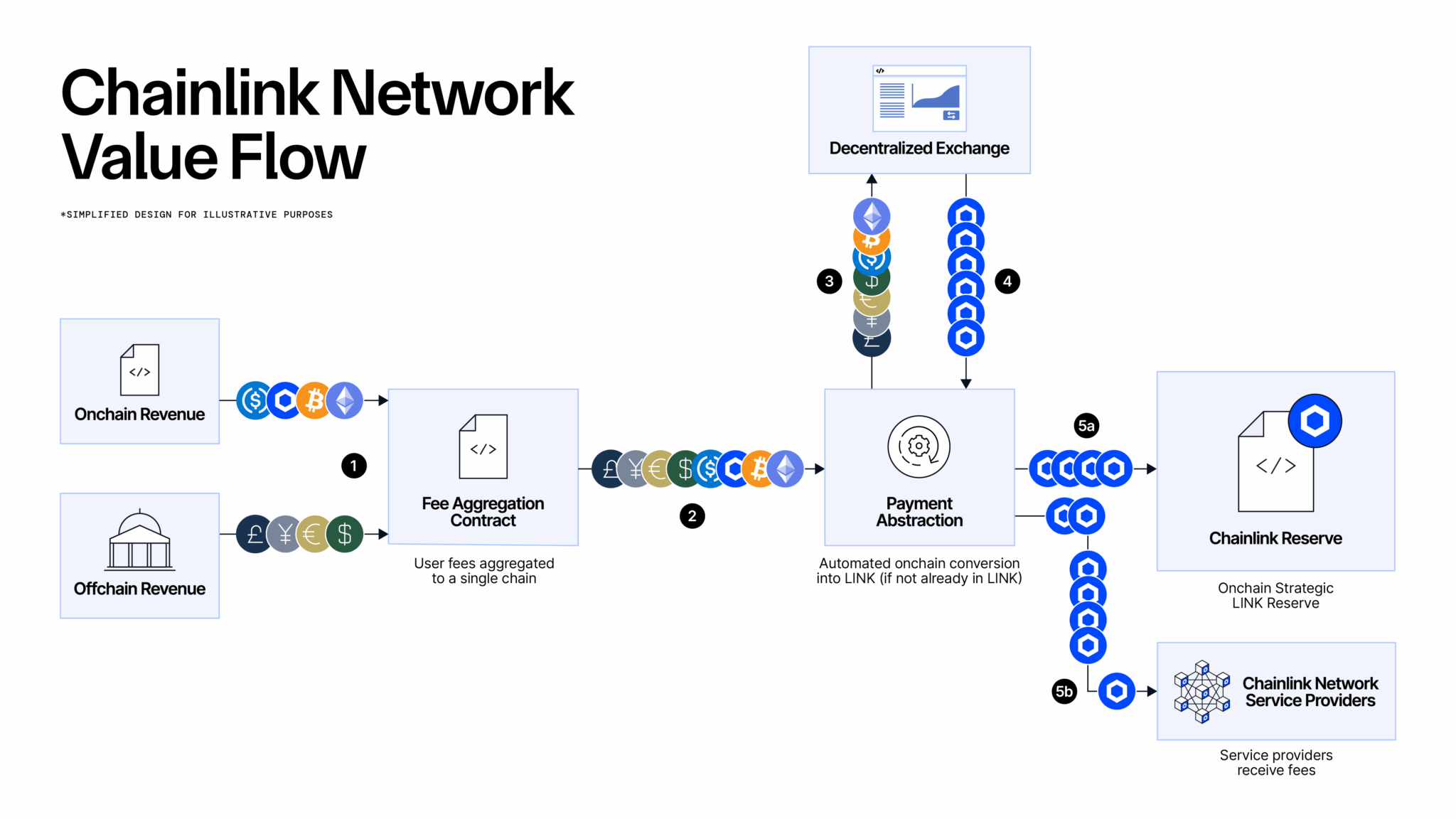Key Takeaways
- Chainlink has launched an onchain reserve funded by revenue and network usage, accumulating over $1 million in LINK tokens.
- The Chainlink Reserve leverages Payment Abstraction to collect revenue in any token and convert it to LINK, with no planned withdrawals for multiple years.
Share this article
Chainlink is building a new on-chain reserve system called Chainlink Reserve, designed to accumulate LINK tokens using the revenue that the entity earns from both off-chain and on-chain operations, according to a Thursday announcement.
Off-chain revenue primarily comes from large enterprises paying to access Chainlink’s infrastructure, while on-chain fees are from protocols across DeFi and web3. With over 2,000 price feeds securing more than $80 billion in value, Chainlink is one of the largest oracle providers, powering applications across more than 60 blockchains.
The initiative builds on Chainlink’s Payment Abstraction infrastructure, which allows users to pay for Chainlink services using their preferred payment methods. These payments are then automatically converted to LINK using Chainlink services and decentralized exchanges.


“The launch of the Chainlink Reserve marks a pivotal evolution in Chainlink, establishing a strategic LINK reserve funded using off-chain revenue, as well as from on-chain service usage,” said Chainlink co-founder Sergey Nazarov in a statement. “Demand for the Chainlink standard has already created hundreds of millions of dollars in revenue, substantially from large enterprises.”
Chainlink notes that the reserve has already amassed over $1 million worth of LINK tokens during its early launch phase. The team expects no withdrawals from the Reserve for multiple years, allowing it to grow as more revenue is converted into LINK tokens.
The newly established reserve is part of an effort to make Chainlink’s economic model more sustainable. Alongside growing user fee revenue, the platform has introduced architectural upgrades like the Chainlink Runtime Environment (CRE) to lower operational costs.
The reserve smart contract also includes a built-in timelock to ensure transparency and security for any withdrawals.
Chainlink’s network currently supports various major financial institutions and protocols, including Swift, Euroclear, Mastercard, Fidelity International, UBS, ANZ, Aave, GMX, and Lido, powering transactions across decentralized finance, banking, and tokenized real-world assets.
Share this article
